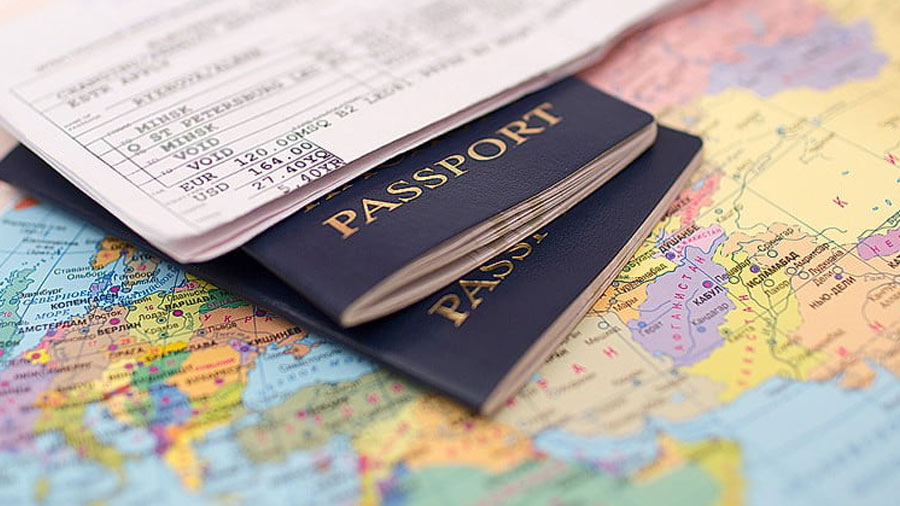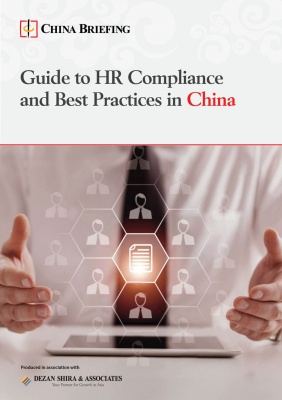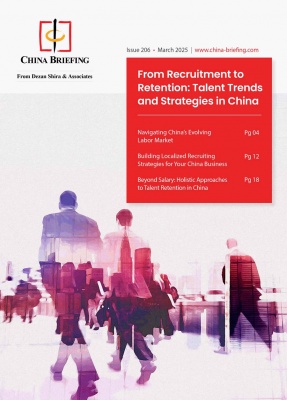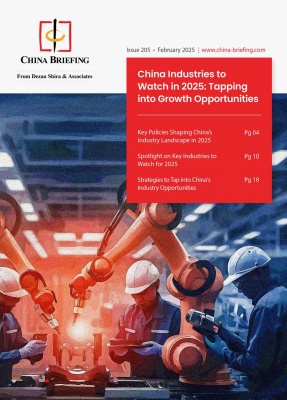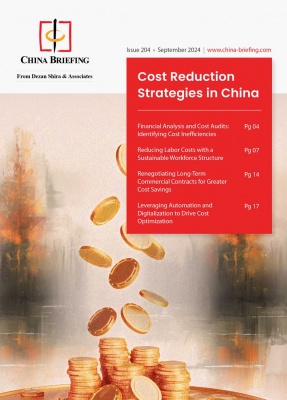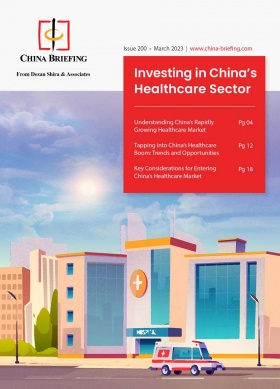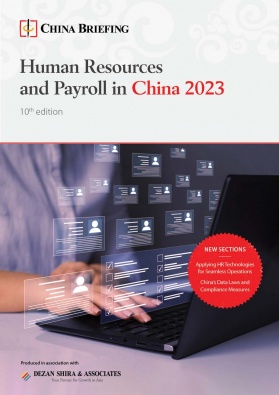Preparing for Chinese New Year 2025: Essential Tips for Businesses
As Chinese New Year—also known as the Spring Festival—approaches, it brings a mix of celebration and operational challenges for businesses. While the holiday is a time of joy and cultural significance, it also creates unique disruptions, including temporary shutdowns, heightened employee turnover, and logistical bottlenecks. To navigate this critical period, companies must plan strategically and address key operational aspects.
In this article, we outline essential considerations for businesses preparing for the holiday season, from compliance with overtime payment regulations to structuring annual bonuses and managing tax obligations. We also recommend implementing robust workplace security measures, as well as other measures to ensure continuity in operations. By making proactive preparations, we hope to help businesses minimize disruptions, maintain productivity, and strengthen employee relations during and after the Chinese New Year.
Chinese New Year 2025 Calendar
The 2025 Chinese New Year will run from January 28 and February 4, spanning a total of eight days. January 26, 2025 (Sunday) and February 8, 2025 (Saturday) are designated as workdays to compensate for the long Spring Festival break.
In a departure from previous years, the holiday has been extended by an additional day, beginning on Chinese New Year’s Eve (除夕).
|
2025 Chinese New Year Holiday Calendar |
||||||
| Monday | Tuesday | Wednesday | Thursday | Friday | Saturday | Sunday |
| Jan 26 – make-up workday | ||||||
| Jan 27 – work | Jan 28 – public holiday | Jan 29 – public holiday | Jan 30 – public holiday | Jan 31 – public holiday | Feb 1 – weekend | Feb 2 – weekend |
| Feb 3 – adjusted off day | Feb 4 – adjusted off day | Feb 5 – work | Feb 6 – work | Feb 7 – work | Feb 8 – make-up workday | |
Note that although the statutory New Year holiday lasts for only eight days, the “New Year period” in the context of travel and holidaymaking —extends well beyond these official dates. Typically, this period begins one to two weeks before the start of the official holiday and continues for approximately a week afterward. This extended timeframe is due to individuals taking additional annual leave to prolong their break or to avoid peak travel periods.
In 2025, the Ministry of Transportation estimates that the Spring Festival travel rush, often described as the largest annual human migration, will span from January 14 to February 22, totaling 40 days.
Overtime payment for hours working during the CNY
To ensure the smooth operation of production and sales activities during the Chinese New Year holiday, many companies need to adjust employee leave schedules and establish duty rosters. Adequate staffing during the holiday period is essential for daily operations and handling emergencies. When requiring employees to work during the holiday, compliance with overtime payment regulations is critical.
Under Chinese labor laws and regulations, overtime payment rates vary depending on the type of rest days and the working hour system implemented.
Under the standard working hour system, for work performed on an official public holiday (i.e., Jan 28-31 in the case of CNY), not less than 300 percent of the normal wage shall be paid; for work on weekend or an adjusted rest day (Feb 1-4), and where such rest days cannot be postponed and taken at another time, not less than 200 percent of the normal wage shall be paid.
Under the comprehensive working hour system, for work performed on public holidays (Jan 28-31) not less than 300 percent of the normal wage shall be paid. However, no rest day is outlined under this system, so that for work performed on those adjusted working days and weekends, no overtime payments are available.
Under the non-fixed work hour system, there are differences in overtime regulations across different regions. For instance, in Beijing, employees under the non-fixed work hour system are not entitled to overtime pay for hours worked on public holidays (Jan 28-31). However, in Shanghai, these hours are considered overtime, and employers are required to pay compensation of up to 300 percent of the normal wage.
For adjusted working days on weekends, no overtime payment is due.
Annual bonus and tax implications
In China, many companies will provide employees with a one-time end-of-year bonus before or around the CNY holiday. One of the most common ways that companies calculate the bonus amount is the “13th-month bonus” wherein the company pays an additional month’s salary around the CNY holiday. However, companies can implement their own bonus system as they see fit.
Annual bonuses in China are subject to individual income tax (IIT). Currently, IIT on bonuses can be calculated in one of two ways:
- Method 1: Calculated and paid separately on the annual one-time bonus.
- Method 2: Calculated and paid on the annual one-time bonus combined with the employee’s total annual income.
The first method is considered preferential treatment as it may decrease the tax burden for some taxpayers. This method will be applicable until the end of 2027. For a full breakdown of how these two methods work, see our article on the Preferential Tax Treatment for Annual One-Time Bonus.
In general, for employees with low basic salaries, it may be more beneficial to combine their annual bonuses with their basic salary to calculate the total IIT (under Method 2) because various deductions could be employed to reduce the tax burden. Meanwhile, for employees with comparatively high basic salaries, Method 1 can potentially reduce the tax burden.
Employee retention during Chinese New Year
Chinese New Year is a peak period for employee turnover, as many people consider changing jobs or career paths. This trend is partly driven by employees’ desire to stay in their current positions long enough to receive their annual bonuses. However, the cultural significance of the holiday also plays a role, as Chinese New Year symbolizes new beginnings, prompting individuals to seek fresh starts. Additionally, higher resignation rates during this time create more opportunities for job seekers. Consequently, the period following the Chinese New Year can be particularly stressful for HR teams, who must manage a surge in vacancies.
In 2025, employee retention may become even more challenging. With both employers and employees facing economic difficulties, companies may lean toward offering smaller annual bonuses and more modest salary increases. According to a leading human resources agency, average salary adjustments for 2025 are expected to stand at 4.4 percent. However, for employees dealing with financial pressures, such as mortgages, childcare, and retirement savings, these increases may not be sufficient. As a result, many professionals may be more inclined to explore new opportunities. The voluntary turnover rate in the first half of 2024 stood at 3.9 percent, lower than that of the same period of the previous year, which stood at 4.9 percent.
The ongoing advancement of technology and market shifts is also driving change in traditional industries, while new sectors, such as artificial intelligence, the Internet of Things, semiconductors, and renewable energy, continue to emerge. These industry transformations provide employees with more opportunities to switch careers. However, in a climate of economic uncertainty, some workers are becoming more risk-averse, prioritizing job security and career stability. As a result, businesses must carefully assess their position within their industry and the broader economic environment to develop effective employee retention strategies.
In situations where financial incentives are limited, companies can implement various long-term strategies to enhance employee satisfaction and loyalty. Key retention strategies include:
- Fostering a positive work environment: Cultivating a supportive and engaging workplace culture helps improve employee morale and loyalty during challenging times.
- Promoting work-life balance: Encouraging a healthy work-life balance can alleviate stress, particularly during periods of economic strain. Companies should carefully manage workloads and set realistic performance expectations to prevent burnout.
- Career development and job stability: Offering employees opportunities for career growth and ensuring job stability are critical to retaining talent. Training and upskilling initiatives not only demonstrate a commitment to employees’ development but also enhance overall productivity.
- Flexible work arrangements: Providing flexible or hybrid work options can significantly reduce stress, especially for employees who benefit from a change in their work environment. Whether through remote work, flexible hours, or compressed work schedules, accommodating individual preferences enhances job satisfaction and reduces stress from rigid work structures.
For example, Ctrip Group has introduced a flexible home-office policy for its customer service staff, allowing eligible employees to work remotely during the Chinese New Year period from January 1 to February 28, 2025. This policy gives employees the option to choose their remote work periods, with up to two months of flexibility. The initiative aims to break the geographical constraints of traditional office settings and helps frontline workers better balance family and work commitments during the holiday season.
Ensuring security
As employees immerse themselves in the festive spirit before and after the Chinese New Year holiday, businesses must prioritize safety to ensure smooth operations and prevent accidents. The days surrounding the holiday can be a period of complacency, so companies, particularly those in manufacturing, need to focus on preemptive safety measures and post-holiday motivation to maintain productivity and avoid safety incidents.
Key safety measures to implement include:
- Comprehensive safety inspections: Conduct thorough checks of office spaces, warehouses, and production lines, paying special attention to fire, theft, and water-related risks.
- Emergency response plans: Ensure that a robust emergency plan is in place for the holiday period, outlining procedures for handling unexpected events, and ensuring that key contacts are available for immediate response.
- Equipment maintenance: Carry out necessary maintenance on critical equipment to ensure smooth operations post-holiday. Any equipment that requires attention should be inspected, cleaned, and tested before production resumes.
- Security awareness and education: Reinforce safety protocols with employees, ensuring they understand the importance of adhering to safety standards before, during, and after the holiday. This includes fire prevention, theft prevention, and the safe handling of hazardous materials.
- Duty shifts and emergency drills: Organize shift schedules for employees working during the holiday, ensuring that the required staff are available for security and safety checks. Conduct emergency drills and provide professional skills training to enhance readiness in case of unforeseen situations.
- Hazardous materials management: Before the holiday, companies should minimize the volume of hazardous materials on-site, either returning them to suppliers or reducing stock to the minimum necessary. Businesses that continue operations should strictly control the storage of flammable and explosive materials.
- Post-Holiday safety review: Before employees return to regular duties, companies should conduct a safety meeting to re-emphasize safety protocols, followed by a thorough inspection of the premises, including testing machinery and equipment to ensure they are safe and fully operational.
By implementing these preventive and proactive safety measures, businesses can ensure that employees return from the holiday with a clear understanding of their responsibilities, while minimizing the risk of safety incidents during and after the Chinese New Year period.
Financial and logistical preparations
In addition, proper financial and logistical planning is crucial to ensuring smooth operations and minimizing disruptions during the Chinese New Year period.
Sales forecasting and inventory management: Accurate sales forecasts based on historical data and current market trends are essential for predicting demand during the Chinese New Year and the period immediately following. Businesses should plan and prepare inventory accordingly, taking into account potential production shutdowns and logistic delays due to the holiday. This will help prevent stockouts and ensure that customers’ needs are met even if factories close or shipping services are limited.
Cash flow management: Maintaining adequate liquidity is also critical during the holiday season. Companies should ensure they have sufficient working capital to cover operational expenses, including emergency costs that may arise during the holiday. A review of cash flow projections can help identify potential cash shortages, enabling businesses to secure necessary funds before the break.
Inventory procurement and material reserves: Ahead of the holiday season, businesses should stockpile essential materials and supplies based on expected demand. This includes raw materials, office supplies, and seasonal items such as decorations and promotional goods. Ensuring that necessary resources are in place before the holiday will help businesses operate smoothly, even if supply chains are disrupted.
By taking these key steps in financial and logistical planning, businesses can ensure they are well-prepared for both the operational challenges of the Chinese New Year and the financial demands of the holiday season. Proper forecasting, inventory management, and preparation for employee needs will contribute to a seamless holiday experience and strong performance in the months following.
About Us
China Briefing is one of five regional Asia Briefing publications, supported by Dezan Shira & Associates. For a complimentary subscription to China Briefing’s content products, please click here.
Dezan Shira & Associates assists foreign investors into China and has done so since 1992 through offices in Beijing, Tianjin, Dalian, Qingdao, Shanghai, Hangzhou, Ningbo, Suzhou, Guangzhou, Haikou, Zhongshan, Shenzhen, and Hong Kong. We also have offices in Vietnam, Indonesia, Singapore, United States, Germany, Italy, India, and Dubai (UAE) and partner firms assisting foreign investors in The Philippines, Malaysia, Thailand, Bangladesh, and Australia. For assistance in China, please contact the firm at china@dezshira.com or visit our website at www.dezshira.com.
- Previous Article US Investment Ban on China: What it Means Now That it’s in Effect
- Next Article China’s GDP Expands 5% in 2024: Fast Facts & Key Drivers




